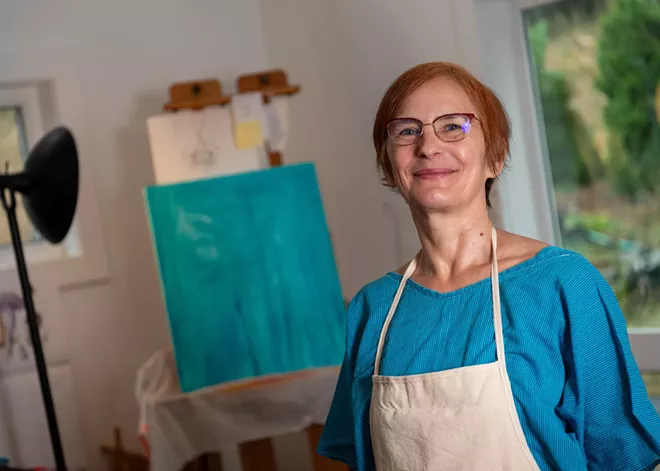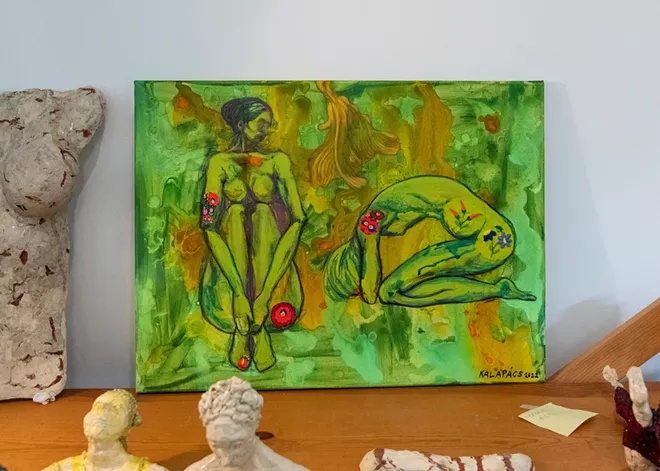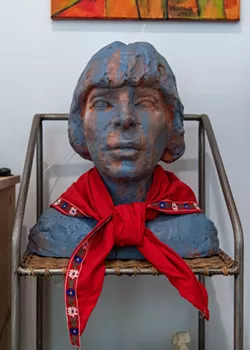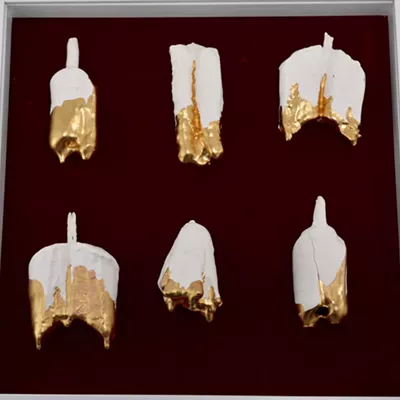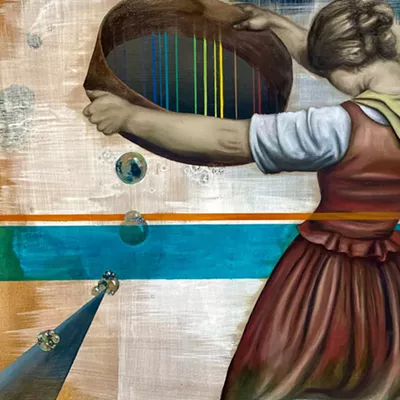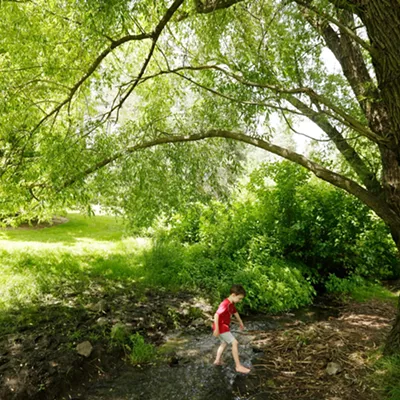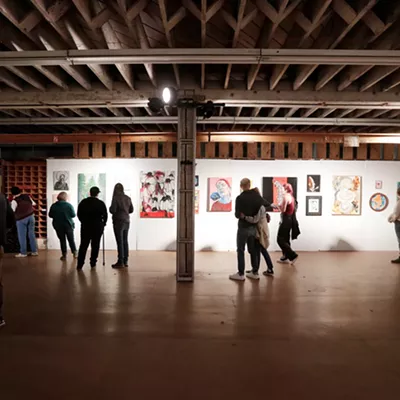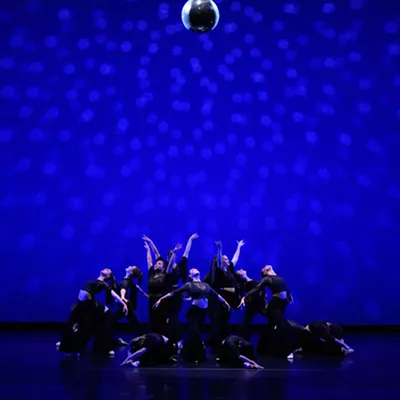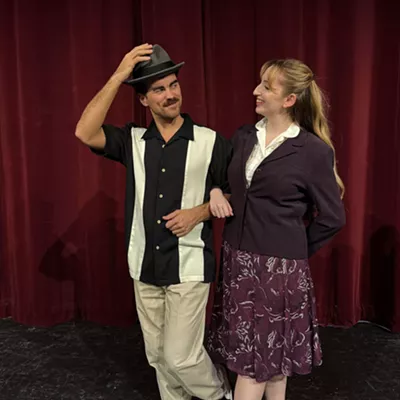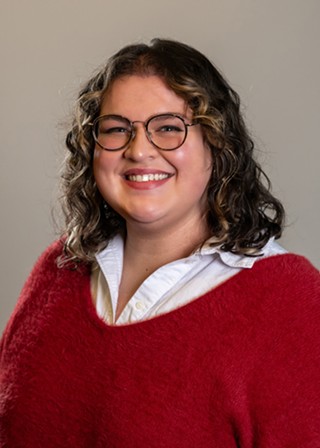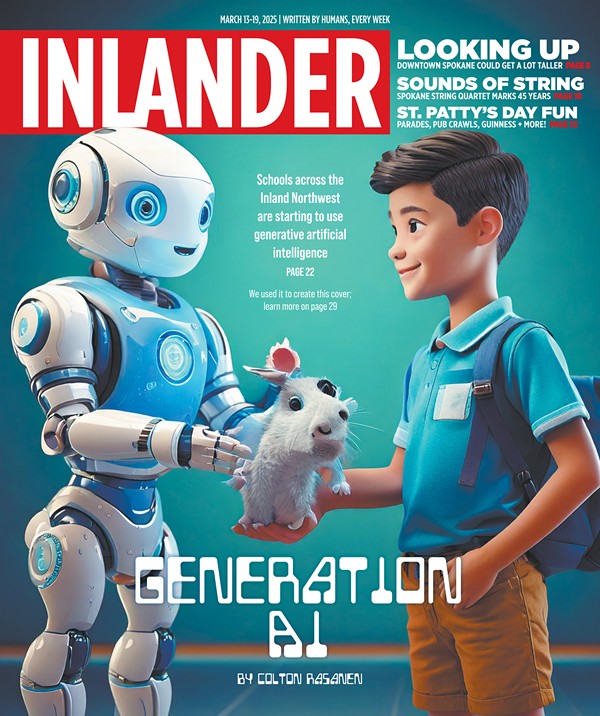Ildikó Kalapács has always wanted to help people.
She dreamed of becoming a psychologist when she was young and living in Szeged, Hungary. She saw the dysfunctional society she lived in and the stressors of her family life and wished she could somehow fix all of the problems herself.
"In Europe usually you decide very early on what direction you want to go," Kalapács says. "If you want to go study as an intellectual or if you want to be a blue-collar worker. I wanted to help."
Instead, she decided to follow her older sister and found herself taking the entrance exam for Szeged's leading art high school. Kalapács was accepted. Around the same time, she became involved with a Hungarian folk dance group.
"We weren't paid but we practiced twice a week," she says. "Peasant dancers from other villages came and showed us their dances and their different attitudes toward life. That was a powerful connection for me. Living in socialist Hungary, most people couldn't travel to non-socialist countries unless they were diplomats or artists. So we traveled to many different countries to dance."
In her current exhibition at Spokane Art School, Kalapács is combining her cultural background and love of nature into a solo show titled "Symbiosis and Co-existence."
The artist's paintings and sculptures feature prominent themes from Hungarian folk culture and nearly all of the pieces include some type of mushroom, a recent obsession of Kalapács'. The combination of mushrooms and the human body represents the balance of human existence and nature.
Ranging from nude paintings to clay busts of people, the exhibition also shows off the human form, something Kalapács believes is important to highlight rather than hide.
"I'm a huge advocate of music and dance because it's all about community and self-esteem," she says. "I think in the U.S., people are not often comfortable with their bodies, so I think dance really shifts your focus from your body being just an aesthetic object to a tool that you can utilize."
Kalapács and her husband emigrated to the U.S. in 1987, but she didn't leave her home country's culture behind. Her experiences in socialist Hungary inform her everyday life in Spokane and nearly every piece of art she creates.
"We couldn't vote and we couldn't protest," she says. "It was a one-party government. It's humiliating when you are not allowed to have input. Because I came from that era, it never left me, so I am very much an advocate of free speech. I wasn't born [in the U.S.], but I have a very good life. I just want the best for everyone and I'm kind of fierce about it. You just have to take care of people."
Many pieces in "Symbiosis and Co-existence" feature traditional Hungarian hand embroidery, a skill Kalapács learned as a young girl.
"We would sit for hours on end embroidering our outfits for folk dancing," she says. "It's so beautiful and I love incorporating it into my art. It's a piece of my home."
Her vibrant paintings of people in dynamic forms and the ceramic busts are accompanied by pieces of hand-stitched embroidery placed carefully onto various body parts, emphasizing the beauty Kalapács sees in the human body.
Kalapács aims to start discussions with all of her work, but especially with the pieces in "Symbiosis and Co-existence."
"I combined my knowledge of dance and body language with how bodies and movement can be metaphors or allegories," she says. "The different Eastern European embroideries paired with the mycelium mushrooms and the figure are just so beautiful together. They are very important to cultural identity."
The natural world is well-represented in the show with themes of fire and water throughout. Kalapács says she incorporated themes of natural destruction because the topic is constantly relevant.
"I think it speaks to the fact that we need to save as much of the Earth as we can," she says. "All I can do is put my ideas out there and hope that people will relate to them. And if they do, it doesn't matter. At least we discussed them. There is hope in that." ♦
Ildikó Kalapács: Symbiosis and Co-existence • Through Aug. 30; Mon-Fri from 10 am-5 pm • Free • Spokane Art School • 503 E. Second Ave. • spokaneartschool.net

